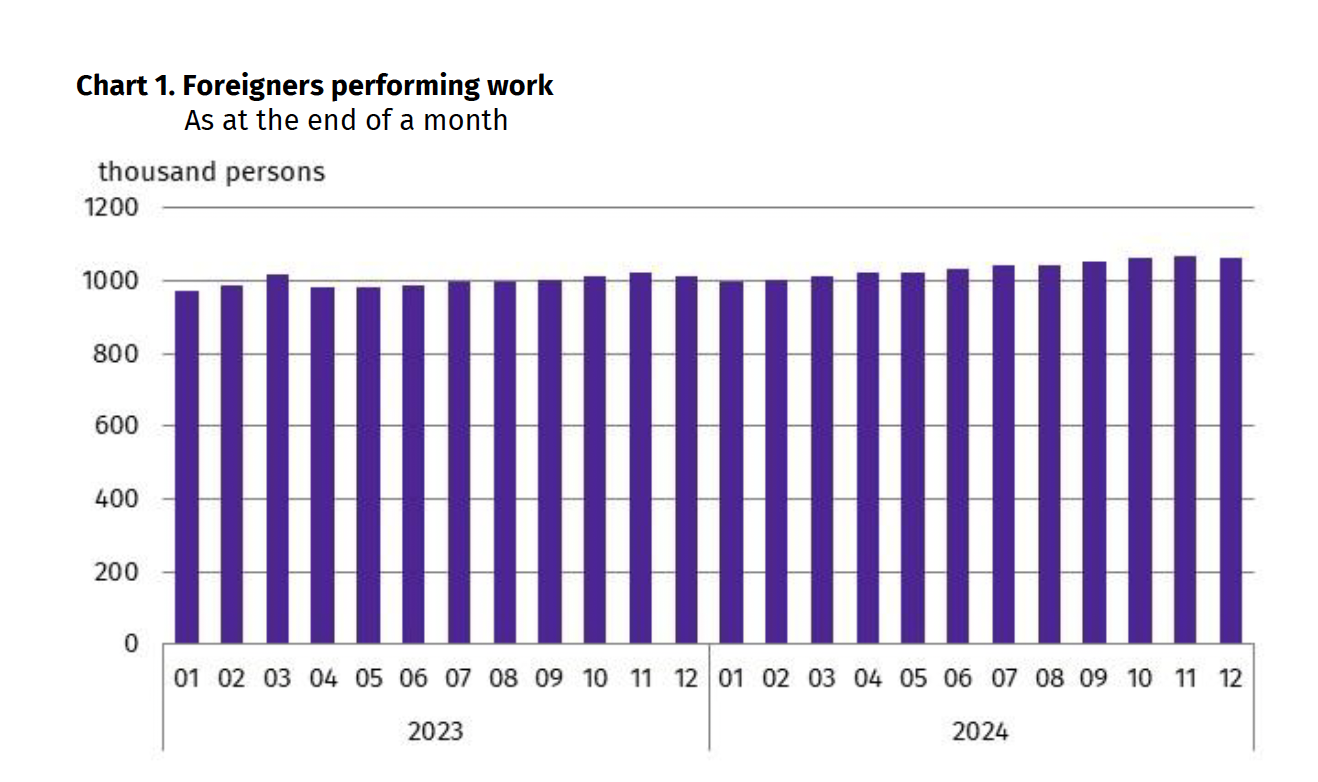2025-06-09
indicators

As of December 2024, foreigners accounted for 6.8% of all individuals performing work in Poland, according to data from Statistics Poland. The total number of foreigners engaged in employment or working under civil law contracts surpassed one million, reaching approximately 1,064,100 individuals. Over the course of 2024, the number of foreign workers increased by 6.4%, with 64,300 more foreigners working at the end of December compared to January. The study encompasses both individuals employed in the national economy and those engaged under civil law contracts, excluding owners of agricultural holdings and individuals on specific task contracts. By the end of 2024, 414,300 foreigners were working under civil law contracts, an increase of 7.3% compared to January. Throughout 2024, the share of foreigners in the workforce steadily rose from 6.5% in January to 6.8% in December. Men represented the majority of foreign workers, accounting for about 60% throughout the year. Among Ukrainian citizens, who made up the largest group of foreign workers at 67.1%, men constituted 51.9%. By contrast, among workers from other countries, men accounted for 75.8%. Belarusian citizens formed the second-largest group at 11.0%. Other nationalities represented less than 3% each, though the number of workers from these groups grew rapidly. For example, the number of Colombian workers increased by 200%, Filipino workers by 52%, and Indian workers by 12.1% during 2024. Foreign workers were generally younger than their Polish counterparts. The median age of foreigners performing work was 37 years, compared to 42 years for Polish workers. Ukrainian workers tended to be slightly older than foreigners from other countries, with a median age of 38 years. The Warszawski Stołeczny region had the highest concentration of foreign workers, with 19.8% of the total. Conversely, the Świętokrzyskie region had the fewest. Foreign workers resided across all Polish powiats and cities with powiat status, with Ukrainian citizens forming the majority in many areas. In three powiats, Ukrainians accounted for more than 90% of the foreign workforce. In terms of economic sectors, the highest proportion of foreign workers was found in administrative and support service activities, where they represented over 25% of the workforce. Other sectors with significant foreign worker presence included accommodation and food services (16.3%) and transportation and storage (14.4%). Ukrainian citizens remained the dominant group across all sectors. These figures reflect ongoing trends in Poland’s labor market, where foreign workers play an increasingly important role, particularly in sectors characterized by a high demand for labor. Source: Statistics Poland

